-
 Bitcoin
Bitcoin $106,754.6083
1.33% -
 Ethereum
Ethereum $2,625.8249
3.80% -
 Tether USDt
Tether USDt $1.0001
-0.03% -
 XRP
XRP $2.1891
1.67% -
 BNB
BNB $654.5220
0.66% -
 Solana
Solana $156.9428
7.28% -
 USDC
USDC $0.9998
0.00% -
 Dogecoin
Dogecoin $0.1780
1.14% -
 TRON
TRON $0.2706
-0.16% -
 Cardano
Cardano $0.6470
2.77% -
 Hyperliquid
Hyperliquid $44.6467
10.24% -
 Sui
Sui $3.1128
3.86% -
 Bitcoin Cash
Bitcoin Cash $455.7646
3.00% -
 Chainlink
Chainlink $13.6858
4.08% -
 UNUS SED LEO
UNUS SED LEO $9.2682
0.21% -
 Avalanche
Avalanche $19.7433
3.79% -
 Stellar
Stellar $0.2616
1.64% -
 Toncoin
Toncoin $3.0222
2.19% -
 Shiba Inu
Shiba Inu $0.0...01220
1.49% -
 Hedera
Hedera $0.1580
2.75% -
 Litecoin
Litecoin $87.4964
2.29% -
 Polkadot
Polkadot $3.8958
3.05% -
 Ethena USDe
Ethena USDe $1.0000
-0.04% -
 Monero
Monero $317.2263
0.26% -
 Bitget Token
Bitget Token $4.5985
1.68% -
 Dai
Dai $0.9999
0.00% -
 Pepe
Pepe $0.0...01140
2.44% -
 Uniswap
Uniswap $7.6065
5.29% -
 Pi
Pi $0.6042
-2.00% -
 Aave
Aave $289.6343
6.02%
How to control the rhythm of building a position when the right shoulder of the head and shoulders bottom is formed?
The head and shoulders bottom pattern signals a potential trend reversal from downtrend to uptrend, with the right shoulder marking the final stage before a possible breakout above the neckline.
Jun 18, 2025 at 05:35 am
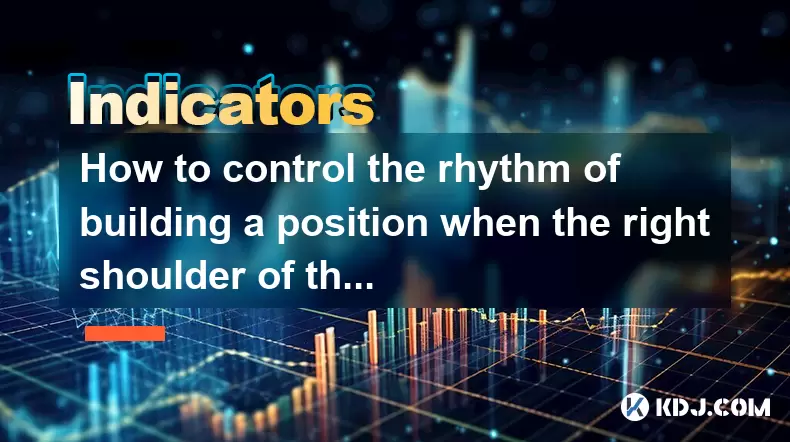
Understanding the Head and Shoulders Bottom Pattern
The head and shoulders bottom pattern is a key reversal signal in technical analysis, indicating a potential shift from a downtrend to an uptrend. The structure consists of three distinct lows: the left shoulder, the head (the lowest point), and the right shoulder (slightly higher than the head). The neckline acts as a resistance level that traders monitor closely for confirmation of a trend reversal. When the right shoulder forms, it signals the final stage before a possible breakout.
Traders often face challenges in timing their entries and managing position sizes during this phase. Misjudging the formation can lead to premature entry or missed opportunities. Therefore, understanding how to control the rhythm of building a position becomes crucial at this stage.
Identifying Confirmation Signals Before Building a Position
Before initiating any trade, it's essential to confirm the validity of the head and shoulders bottom pattern. Traders should wait for a clear breakout above the neckline with increased volume. This serves as a strong indication that institutional buyers are stepping in and momentum is shifting upwards.
Another critical factor is the retest of the neckline after the initial breakout. If the price pulls back to the former resistance (now support) and holds, it provides a second chance to enter the trade with lower risk. Monitoring candlestick formations such as bullish engulfing patterns or hammer candles near the neckline can further validate the strength of the reversal.
Avoid entering too early when the right shoulder is still forming. Premature entry increases exposure to false breakouts and retracements. Instead, use horizontal support levels and Fibonacci retracement zones to identify potential reversal areas within the right shoulder itself.
Managing Risk During the Right Shoulder Formation
Risk management plays a pivotal role when building a position during the right shoulder development. Since the pattern isn't confirmed until the neckline breaks decisively, traders must limit initial exposure. A common strategy involves placing a stop-loss just below the low of the right shoulder to protect against a failed pattern.
Position sizing should reflect the uncertainty present during this phase. Entering with a small portion of the total intended position allows flexibility to scale in if the pattern confirms. Traders should also be aware of broader market conditions — a weak macro environment may reduce the reliability of the pattern even if it appears technically sound.
Monitoring volatility through indicators like ATR (Average True Range) helps in setting appropriate stop-loss distances. Wider stops may be necessary in high-volatility environments to avoid being shaken out prematurely by normal price fluctuations.
Scaling Into Positions After Breakout Confirmation
Once the price closes convincingly above the neckline with strong volume, traders can consider scaling into their positions gradually. A portion of the position can be added upon the initial breakout, while additional entries can be made during pullbacks or retests of the neckline.
Using a trailing stop mechanism on the existing position helps lock in profits while allowing room for the trend to develop. It's important not to overcommit capital too quickly; instead, maintain a disciplined approach by adhering to predefined entry zones and risk-reward ratios.
Fibonacci extensions can guide profit-taking targets. The 100% extension from the head to the neckline often serves as a realistic first target. Further extensions such as 161.8% or 200% may act as longer-term objectives depending on market strength and volume dynamics.
Observing Volume and Price Action During the Build-Up
Volume plays a significant role in confirming the legitimacy of the head and shoulders bottom pattern. Ideally, volume should decrease during the formation of the right shoulder, reflecting diminishing selling pressure. A surge in volume during the breakout confirms institutional participation and increases the likelihood of a sustained move upward.
Price action around key levels should also be monitored closely. Watch for strong bullish candles breaking the neckline and absence of long upper wicks during pullbacks. These signs indicate buyer dominance and increase confidence in holding or adding to the position.
Intraday traders can benefit from watching smaller timeframes like the 1-hour or 15-minute charts to identify micro-breakouts or continuation setups after the main pattern completes. However, always reference the daily chart to ensure alignment with the broader trend.
Frequently Asked Questions
What is the significance of the right shoulder in the head and shoulders bottom?
The right shoulder indicates the final attempt by sellers to push prices lower before the pattern completes. It typically forms at a higher low compared to the head, suggesting weakening bearish momentum and increasing the probability of a reversal.
Can I trade the head and shoulders bottom without waiting for a neckline breakout?
While some traders attempt to anticipate the breakout by entering near the right shoulder, doing so carries higher risk. Waiting for a confirmed breakout with strong volume reduces the chances of falling victim to a false pattern.
How do I determine where to place my stop-loss when trading the right shoulder?
A logical stop-loss placement lies just below the low of the right shoulder. Alternatively, traders may extend it slightly below the head’s low for more aggressive setups, though this increases risk per trade.
Is it better to enter all at once or scale into the position after the breakout?
Scaling into the position offers more flexibility and reduces overall risk. Entering partially on the breakout and adding during pullbacks allows traders to average into the trend while managing drawdown effectively.
Disclaimer:info@kdj.com
The information provided is not trading advice. kdj.com does not assume any responsibility for any investments made based on the information provided in this article. Cryptocurrencies are highly volatile and it is highly recommended that you invest with caution after thorough research!
If you believe that the content used on this website infringes your copyright, please contact us immediately (info@kdj.com) and we will delete it promptly.
- Parataxis Holdings & Bridge Biotherapeutics: A Bitcoin Treasury Play in South Korea
- 2025-06-20 20:25:12
- Pi Network Price Prediction: Navigating June 2025's Uncertainties
- 2025-06-20 20:25:12
- AI Chip Maker Cerebras Hacked: Crypto Scam Alert!
- 2025-06-20 20:45:13
- dYdX Surge Program: Leveling Up DeFi Trading with Incentives
- 2025-06-20 20:45:13
- Bitcoin Breakout Watch: Can BTC Surge to $100K and Beyond?
- 2025-06-20 20:50:12
- Coinsilium, Bitcoin Treasury, Forza!: Riding the Crypto Wave in 2025
- 2025-06-20 20:50:12
Related knowledge

Is the golden cross of the ROC indicator below the zero axis effective?
Jun 20,2025 at 09:42pm
Understanding the ROC Indicator and Its Role in Cryptocurrency TradingThe Rate of Change (ROC) indicator is a momentum oscillator widely used by traders to assess the speed at which cryptocurrency prices are changing. It measures the percentage difference between the current price and the price from a certain number of periods ago. The ROC helps identif...
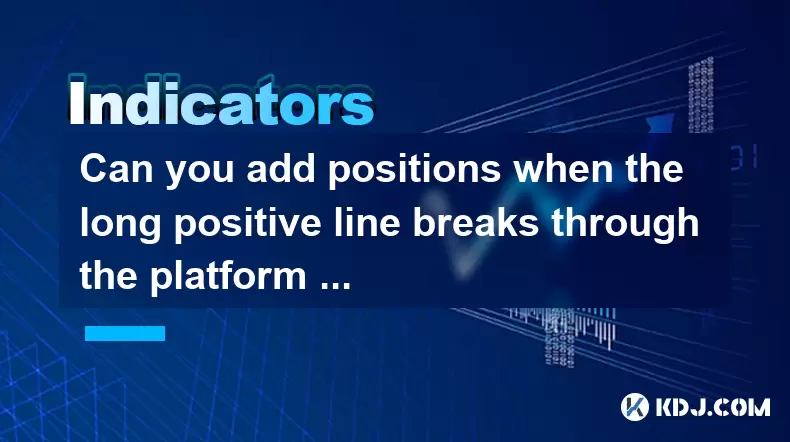
Can you add positions when the long positive line breaks through the platform and then shrinks and falls back?
Jun 20,2025 at 08:57pm
Understanding the Price Pattern: Breakthrough, Retract, and ConsolidationIn cryptocurrency trading, one of the commonly observed patterns involves a long positive line breaking through a consolidation platform, followed by a retraction or pullback. This scenario often raises questions among traders about whether to add positions after such a move. The p...
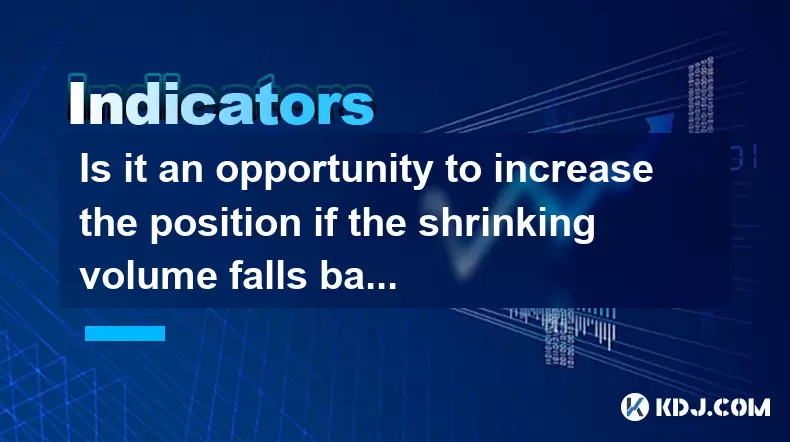
Is it an opportunity to increase the position if the shrinking volume falls back to the rising trend line?
Jun 20,2025 at 06:22pm
Understanding the Shrinking Volume in Cryptocurrency TradingIn cryptocurrency trading, volume is one of the most critical indicators used to confirm price movements and trends. When traders observe a scenario where volume shrinks during a pullback, it can signal either a lack of selling pressure or an imminent reversal. This phenomenon often occurs when...
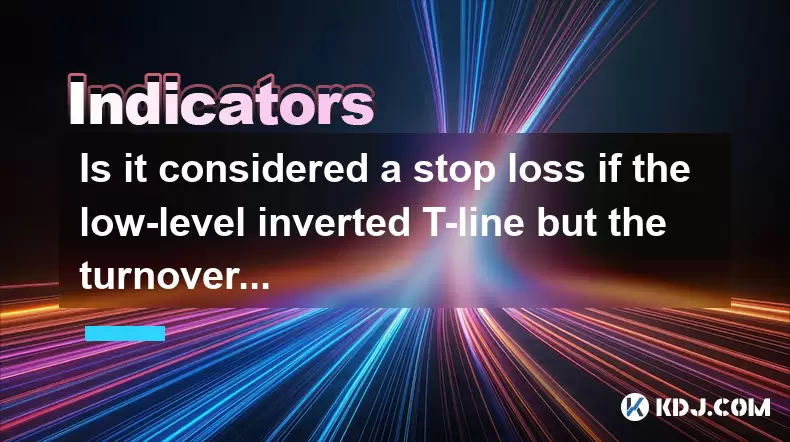
Is it considered a stop loss if the low-level inverted T-line but the turnover rate is extremely low?
Jun 20,2025 at 04:49pm
Understanding the Low-Level Inverted T-Line in Cryptocurrency ChartsIn technical analysis within the cryptocurrency market, candlestick patterns are crucial indicators for traders to predict potential price movements. The low-level inverted T-line is a specific type of candlestick pattern that often raises questions among traders. This pattern typically...
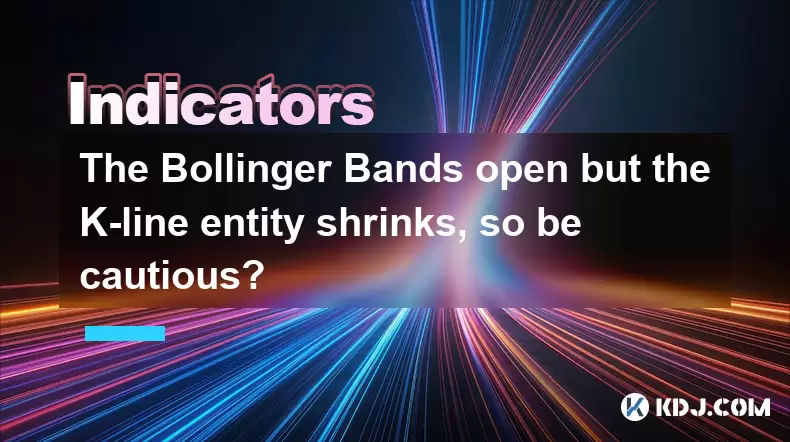
The Bollinger Bands open but the K-line entity shrinks, so be cautious?
Jun 20,2025 at 06:08pm
Understanding the Bollinger Bands and K-Line RelationshipBollinger Bands are a popular technical analysis tool used in cryptocurrency trading. They consist of a moving average (usually 20-period) with two standard deviation lines plotted above and below it. These bands dynamically adjust to price volatility, expanding when volatility increases and contr...
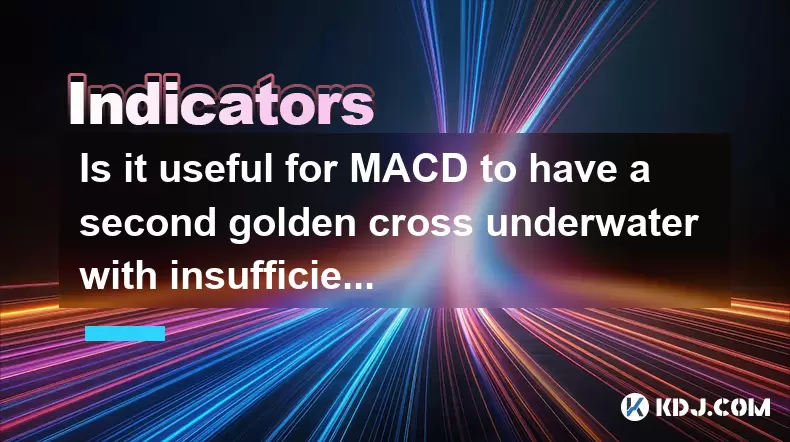
Is it useful for MACD to have a second golden cross underwater with insufficient volume?
Jun 20,2025 at 06:49pm
Understanding the MACD and Its Golden CrossThe Moving Average Convergence Divergence (MACD) is a popular technical analysis tool used by traders to identify potential buy or sell signals. It consists of three components: the MACD line, the signal line, and the histogram. The golden cross occurs when the MACD line crosses above the signal line, often see...

Is the golden cross of the ROC indicator below the zero axis effective?
Jun 20,2025 at 09:42pm
Understanding the ROC Indicator and Its Role in Cryptocurrency TradingThe Rate of Change (ROC) indicator is a momentum oscillator widely used by traders to assess the speed at which cryptocurrency prices are changing. It measures the percentage difference between the current price and the price from a certain number of periods ago. The ROC helps identif...

Can you add positions when the long positive line breaks through the platform and then shrinks and falls back?
Jun 20,2025 at 08:57pm
Understanding the Price Pattern: Breakthrough, Retract, and ConsolidationIn cryptocurrency trading, one of the commonly observed patterns involves a long positive line breaking through a consolidation platform, followed by a retraction or pullback. This scenario often raises questions among traders about whether to add positions after such a move. The p...

Is it an opportunity to increase the position if the shrinking volume falls back to the rising trend line?
Jun 20,2025 at 06:22pm
Understanding the Shrinking Volume in Cryptocurrency TradingIn cryptocurrency trading, volume is one of the most critical indicators used to confirm price movements and trends. When traders observe a scenario where volume shrinks during a pullback, it can signal either a lack of selling pressure or an imminent reversal. This phenomenon often occurs when...

Is it considered a stop loss if the low-level inverted T-line but the turnover rate is extremely low?
Jun 20,2025 at 04:49pm
Understanding the Low-Level Inverted T-Line in Cryptocurrency ChartsIn technical analysis within the cryptocurrency market, candlestick patterns are crucial indicators for traders to predict potential price movements. The low-level inverted T-line is a specific type of candlestick pattern that often raises questions among traders. This pattern typically...

The Bollinger Bands open but the K-line entity shrinks, so be cautious?
Jun 20,2025 at 06:08pm
Understanding the Bollinger Bands and K-Line RelationshipBollinger Bands are a popular technical analysis tool used in cryptocurrency trading. They consist of a moving average (usually 20-period) with two standard deviation lines plotted above and below it. These bands dynamically adjust to price volatility, expanding when volatility increases and contr...

Is it useful for MACD to have a second golden cross underwater with insufficient volume?
Jun 20,2025 at 06:49pm
Understanding the MACD and Its Golden CrossThe Moving Average Convergence Divergence (MACD) is a popular technical analysis tool used by traders to identify potential buy or sell signals. It consists of three components: the MACD line, the signal line, and the histogram. The golden cross occurs when the MACD line crosses above the signal line, often see...
See all articles

























































































